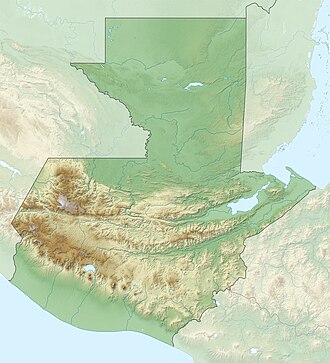Pajapita | |
|---|---|
Municipality | |
| Coordinates: 14°43′00″N92°02′00″W / 14.71667°N 92.03333°W | |
| Country | |
| Department | |
| Government | |
| • Mayor (2016-2020) | Walter López [1] (UCN) |
| Population (2018 census) [2] | |
• Municipality | 21,725 |
| • Urban | 6,817 |
| Climate | Am |
Pajapita is a town and municipality in the San Marcos department of Guatemala.It was created on 31 May 1920, after the station of Vado Ancho on the Panamerican Railroad of Guatemala was built. Due to its privileged location on the way from Guatemala to Mexico, Pajapita enjoyed considerable development while the Guatemalan railways were owned by International Railways of Central America (IRCA}, an American company that belonged to the United Fruit Company. However, with the decline of the rail that followed the constructions of major highways in the country the importance of the town of Vado Ancho diminished, to the point that in the early 21st century it was completely abandoned.
Contents
- Transport
- Panamerican Railroad of Guatemala
- Climate
- Geographic location
- See also
- Notes and references
- References
- Bibliography
- External links
Pajapita is called also "Land of the Almond trees".


